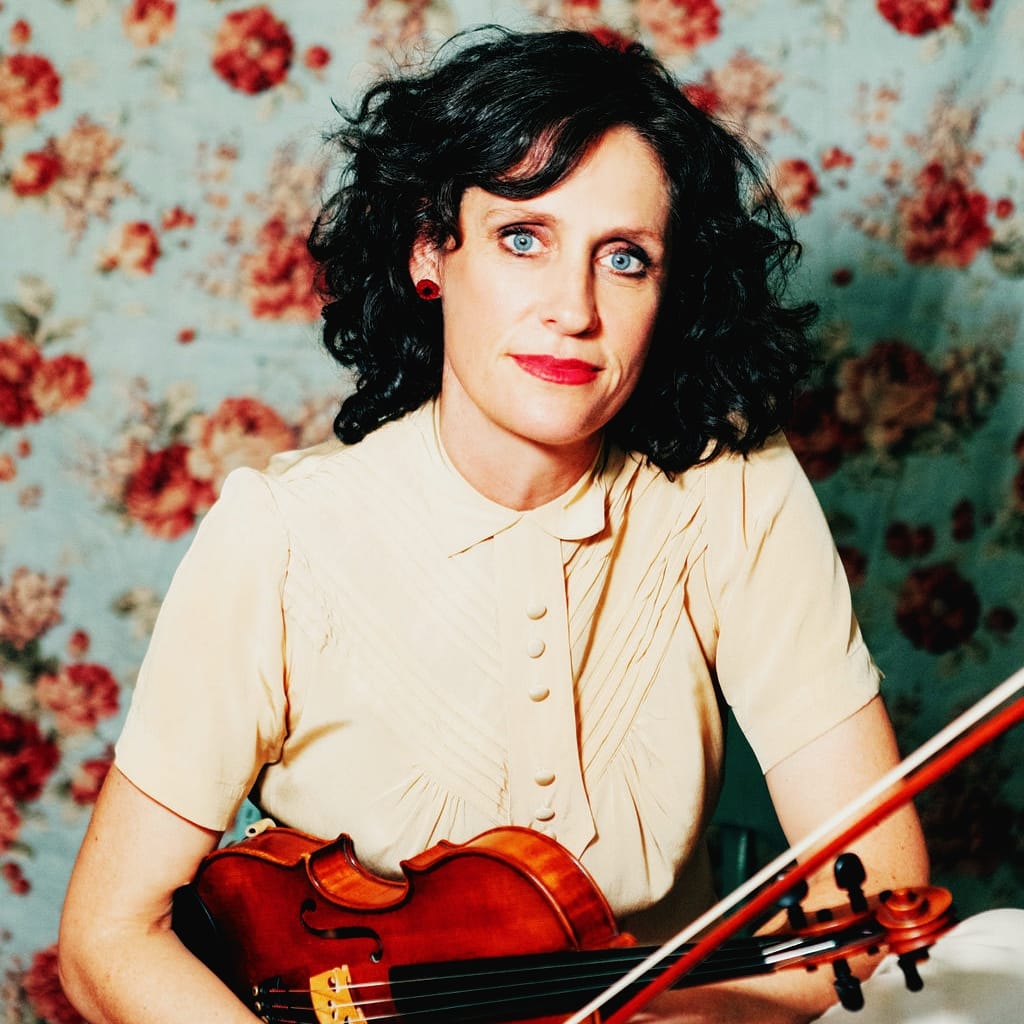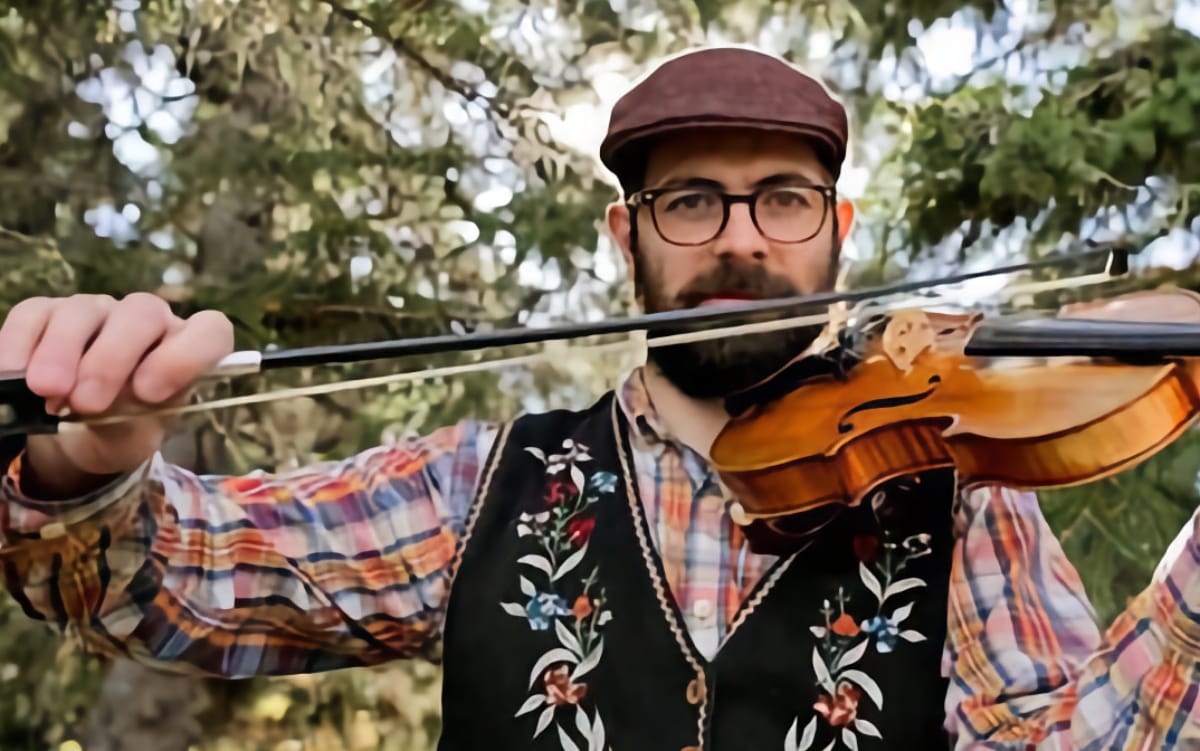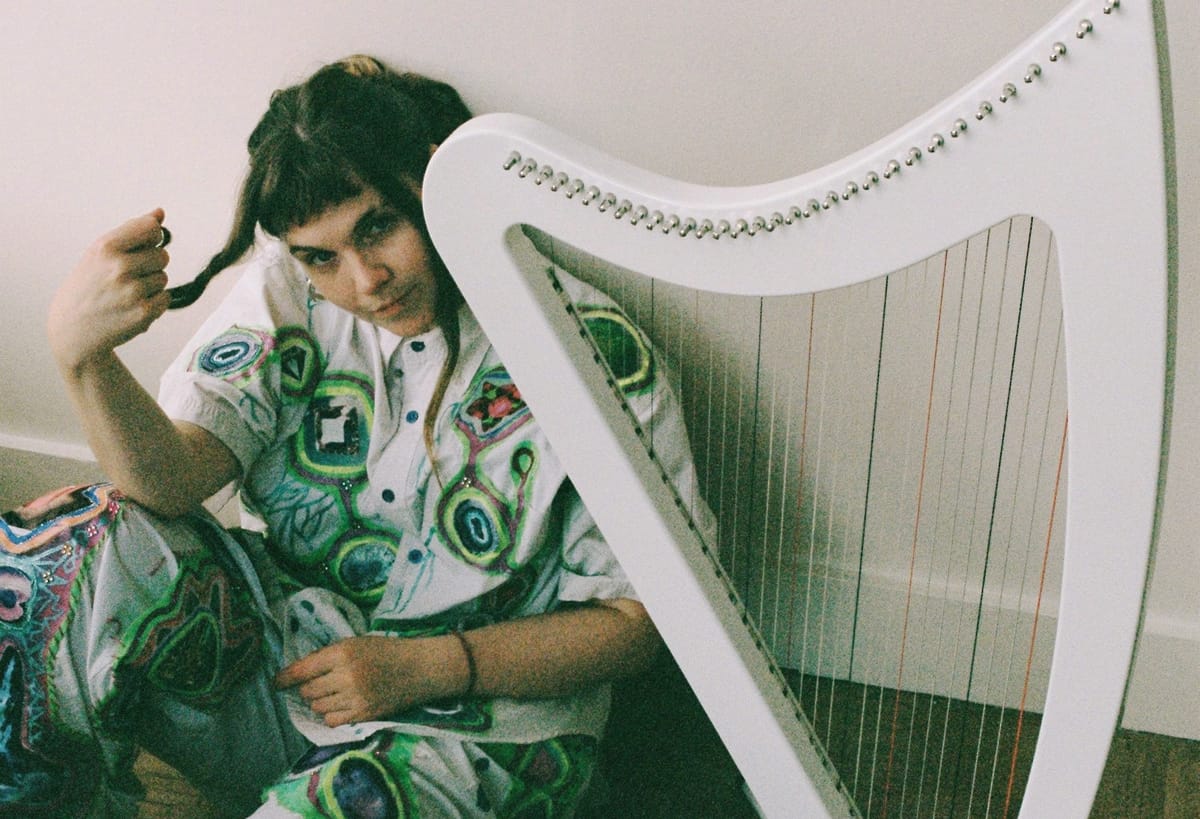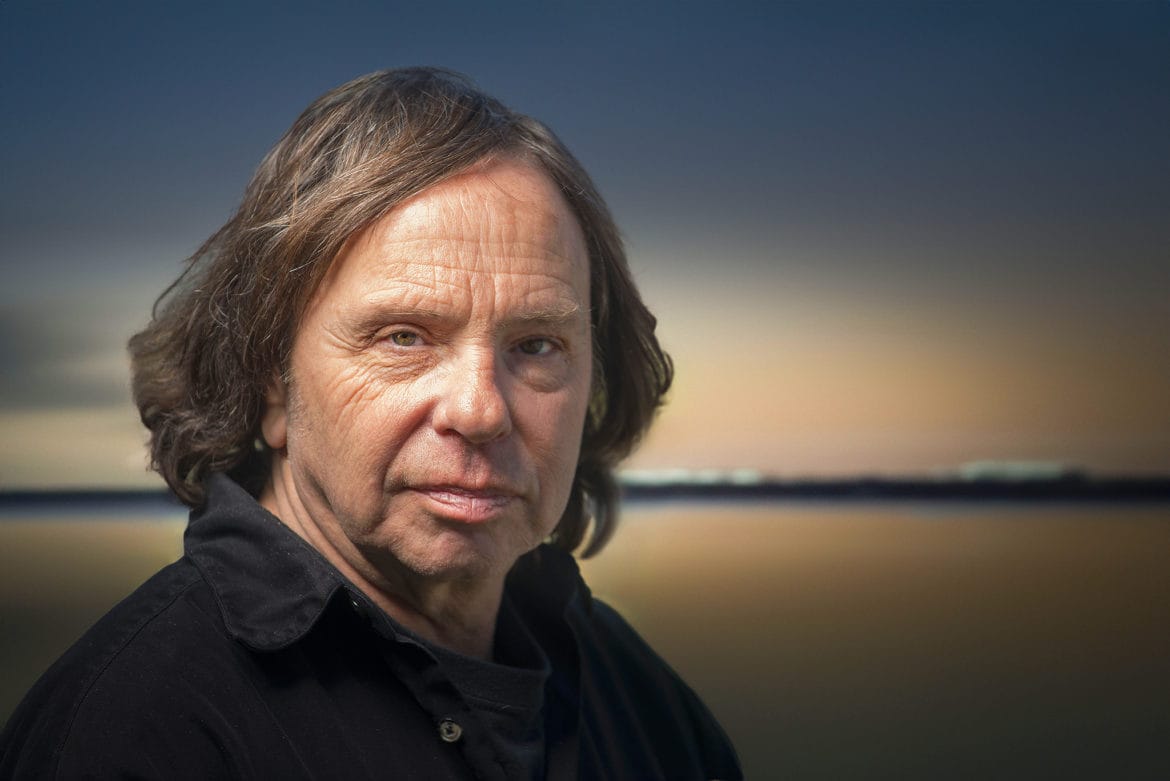Before acclaimed violinist and composer Jenny Scheinman became a stalwart of New York's jazz and creative music scenes, she was a child of the Lost Coast, her musical sensibilities taking root in that remote stretch of California wilderness wedged between vast redwood forests and the Pacific Ocean. Her path through American music has been remarkably diverse—she's toured and recorded with Lucinda Williams, Lou Reed, and Ani DiFranco and even appeared on the cast recording of the Tony-winning musical Hadestown. Her nine previous albums revealed an artist comfortable moving between jazz vernacular and old-time fiddling traditions, perhaps most notably on 2017's Here on Earth with its "moments of joyous ecstasy and wind-swept solemnity," as Downbeat observed.
In 2012, Jenny returned to her native Humboldt County, California. As she confessed to Strings Magazine: "My mind is in the city, but my heart is in the countryside," invoking an old blues sentiment that carries the weight of countless migrations. This homecoming culminated in her most ambitious work: All Species Parade, a sprawling double album celebrating the area's extraordinary biodiversity and a new chapter in her musical evolution. The album features ten compositions, several exceeding eleven minutes in length, and a twenty-minute Ellington-inspired suite comprising three interconnected pieces: "Jaroujiji" (dedicated to the Wiyot tribe), "The Sea Also Rises," and the title track. "I wanted to let us play," Jenny notes about the album's expansive approach. "I encouraged the musicians to spill over the edges and be their most expansive selves. This is nature worship music, and I didn't want it to feel domesticated."
Jenny assembled an extraordinary ensemble for this project featuring pianist Carmen Staaf, guitarists Bill Frisell, Julian Lage, Nels Cline, bassist Tony Scherr, and drummer Kenny Wollesen. The album's multiple chordal instruments create what Jenny describes as "the complex understory of a forest," producing a multi-textured network of sound rooted in American musical traditions and boldly innovative. All Species Parade is a sonic mirror of the ecological diversity of the Pacific Northwest.
Jenny Scheinman was a recent guest on the Spotlight On podcast. Her conversation with host Lawrence Peryer focused on the mechanics and ideas behind All Species Parade while also covering the importance of expressing a sense of place, the act of ‘channeling’ new compositions, and the role of improvisation in her process. Listen to the entire discussion in the Spotlight On player below. The transcription has been edited for length and clarity.
The Freedom of a Vista
Lawrence Peryer: I'm curious about the role of place in your music more generally, but in this album, how does your location, if you can articulate it, sort of influence you and influence this as a body of work?
Jenny Scheinman: I think that we write somewhat out of the subconscious. When I was living in cities for most of my adulthood, I would dream about my childhood rural landscapes. I would probably write about them in some much more subconsciously influenced way: the freedom of a vista and the richness of the flora and fauna.
But when I was grounded here during the pandemic lockdown, it was very literal. I was looking at the things that I'd been dreaming about for so long and appreciating them directly, appreciating just how magnificent and inspiring and good for my spirit the natural world is.
Nobody was doing gigs during the lockdown. But I took a poetry class with an old friend of the family who's one of our poet laureates of Humboldt County and very much a bioregionalist, somebody who has thought very deeply and written extensively about place and the relationship of place to community and the relationship of place to poetry—i.e., art in general.
I'm a somewhat intuitive writer. I work hard at it, but the pieces that end up on my albums are usually more channeled than wrought out of skill. My environment filters into the piece, but I don't look at an apple and write a piece about an apple.
That poetry class made me focus more directly on these things with my more conscious intellect and think about how place affects us and our imagination. Just the immersion in this environment from an adult’s perspective brought out the pieces. I was just really ready to celebrate my childhood landscape.
Lawrence: You mentioned how you’re channeling your pieces, a sort of quasi-mystical element of composition. Do you ever receive something that you can't articulate because of your level of skill development? Is the translation always able to pass through you?
Jenny: That's a big question. I've talked to Bill Frisell, my dear friend and mentor, a lot about this. He once had a dream in which he heard this huge sound mixed with colors and everything he ever knew. And this is something that he's been trying to write for the last 20 years.
There's a certain ambition to capture something exquisitely beautiful that we're always—and I am always—trying to do. I guess we're always struggling with our own skill set in putting it down on paper or into the hands of a band to make it real.
But I also think that the intersection of intuitive writing, composition, and dealing with our own skill set is probably improvisation. That's right at the crossroads because you're working intuitively to some degree within the constraints of your skill set. Improvisers get a whole lot of practice with that.
As a jazz player and an improviser, I write relatively simple things that my musicians can elaborate upon. And it's in that skill of elaboration, interpretation, or improvisation that the core thing is expanded to the magnificent thing I hear in my head. And honestly, I often never hear it as magnificent as it is when in the hands of the players. It's an improviser/jazz phenomenon that you bring these relatively simple ideas or structures to a band, and they turn it into a symphony. And it's different every time.
Lawrence: Earlier this year, I worked on a project with Wayne Horvitz, and he dropped a little bit of a nugget of wisdom on me, which helped me think about this. We were talking about the nature of improvisation, and he said, "I don't distinguish between composition and improvisation. They're just two aspects—what is improvisation, if not composition, just in real time?"
That was a big 'aha' moment because I had this binary thinking about the two. My definitions were slightly off, and I wonder, does that strike you within the right ballpark?
Jenny: I think you are composing when you're soloing. Some artists approach it to varying degrees of spontaneity, even within the classical world. If you compare Beethoven and Haydn, I think Haydn is a composer-composer, and Beethoven is an improviser-composer. I love Haydn, but I think those pieces are constructed more the way a house is constructed. Maybe Beethoven is constructed more the way a garden is constructed. I don't know if that's a good comparison, but there's an intuitive improviser's energy in that music that's different. And I think that for soloists, modern jazz soloists, we're composing because we're choosing the next note we play.
I see what Wayne's saying, but there's a spectrum within which people move toward more spontaneous improvisation and more compositional thinking.

Nature Isn't Separate
Lawrence: In the new album's dedication, you mention several Native American communities. I’d like to learn more about your experience with the people and traditions.
Jenny: Right now, the Native communities up here are having a resurgence. There's been a huge land back movement. My parents—my mother and stepfather—are quite involved in supporting the recovery of knowledge of some of the rituals surrounding the return of the salmon to the Matole River and various other yearly rituals. They've facilitated the purchase of a few pieces of land for the Native tribe in my hometown.
The town I grew up in, Petrolia, which is at the mouth of the Matole River, had previously been inhabited by the Matole people, for which the river is named. They were wiped out quickly, so it had almost no Native presence for me growing up. There was one Native person who had a tiny little bit of Native land. And I remember wondering about that as a young kid, wondering what it was like.
There were also shell mounds at the mouth of the river that are amazing because they're so dense with mussels and abalone and different types of shellfish shells that they can weather hundreds of years of changing sand formations. They're still there.
So, the idea of Native culture in the Matole was something I thought a lot about but didn't have much experience with compared to towns where there were tribal gatherings all the time. I guess in the dedication, I intend to include all species, meaning all plants and animals that live in this area and have lived there. And to make sure that nature isn't separate from humans, we are part of that. To do that, I wanted to specifically include people who once lived or still do live here but had a relationship with this land before white colonials took over.
Lawrence: I'm not well-versed or well-read enough in the philosophy of ecology, but that notion that seems to be gaining traction—or the school of thought that it's a mistake when we think about humans and nature, as opposed to everything we do is part of the natural world. It's a flawed first principle that humans aren't part of nature.
Jenny: Yeah, and I think it's also at the root of many human feelings of alienation. Not only does it lead to the destruction of our habitat, but it also destroys the things that we need to survive, which is this communication with the natural world—the things we get from it, which are more than apples and coal and wind power.

A Place to Sit and Rest
Lawrence: Could you talk a bit about the album's structure, specifically its suite-like nature? Did you tie these compositions together to arrive at that format, or was the conception always there for you?
Jenny: Well, there are two formats. There's a CD, and there's a vinyl LP. The vinyl gives it four sides, each side containing its own little personality. And the second side of the vinyl is a suite. It's the Jarougigi Suite or the All Species Parade Suite. And that's very much dedicated to this area and its Native people.
Jarougigi is the name for the area, which is now the county seat of Humboldt County and now has a very colonial name, Eureka—"I found it." Jarougigi is very mellifluous, and I think it roughly means "a place to sit and rest." It's right on the bay, so it's beautiful.
And that leads into a sort of Ellingtonian improvisation featuring Carmen Staaf, the piano player, and Kenny Wollesen. And then it goes into the "All Species Parade," which is like a party for everyone and a big celebration of life.
Lawrence: It's a big piece of music.
Jenny: Yeah, so that was always kind of a suite. I played this music before I recorded it, and those three pieces were always in a sequence. The gravity of the first piece is contrasted by the grooves and the parade of the last piece, and the middle section is a reflective moment. Duke Ellington influenced the idea. I was listening to a lot of Duke Ellington suites when I wrote this music.
Lawrence: A lot is happening across this record, but it always feels thematically consistent. You conjured a very specific experience for me.
Jenny: For a long time, I was dealing with 80 minutes of music, and my first proposal to my manager was, "Hey, let's do two albums. The first one is called All Species Parade, and it's more grounded in the earth. The second one is called The Mighty Pacific, and it's more grounded in water and air."
She said, "No, the industry doesn't work like that, Scheinman. I want one amazing album." And so I had that phrase, "one amazing album." I looked at these 80 minutes of music, knowing a CD is 72 minutes, and I tried to get a narrative, story, or logic to these tunes.
I went out on the road and played it for a bunch of people like my very, very brilliant friend Robbie Fulks, who's from a different world of music—he's a country singer and a comedian. I said, "Sequence this thing for me, Robbie, I'm stuck." And he came up with "Ornette Goes Home" first. I had never thought of that, totally never thought of that. And he sequenced the whole thing. I made one shift, and it was done. I struggled with the sequence, but he really heard it.
I now hear "Ornette Goes Home" as an introduction to the band. Everybody takes a solo. Everybody has plenty of time. It brings in the celebratory nature of the whole album. That's one of the things you can do in framing an album—it's like the thesis or whatever. If I started with “Nocturne,” it would have been a more serious thesis. I wanted an element of parade and an element of appreciation and frolic, plain old frolic and growth, variety, and diversity. All of that stuff I wanted in there. And I feel like "Ornette Goes Home" brought all of us in with our diversity of perspectives as improvisers.
Lawrence: Something that stands out is how you use three different guitarists. If you say each of the guitar players’ names to me, it conjures something—I have ideas about what each player does. What do you go to each of those players for?
Jenny: I went to Julian Lage for a specific thing, which was acoustic guitar. It's not the only thing Julian does. If I say "Julian Lage," I don't know if everybody thinks of acoustic guitar, but he can do it, and I love it. He can play in a rhapsodic, muscular way on a steel-string acoustic guitar. And there are three songs where he plays acoustic guitar. On two of them, he takes these tremendous solos.
Musically, one thing we discussed before recording was our shared early love of John McLaughlin in the Shakti albums. Also, Django Reinhardt—or that kind of tactile, physical world feel you get from a pick on a steel string on an acoustic guitar, very different than an electric guitar. It's harder to get that real physicality, and in this world I'm building from the natural world. I wanted that physicality there.
Bill Frisell is on the entire record. He's really in the band. Bill expands everything, many dimensions. It's just his sound and his sense. I've been playing with him my whole life. I love playing melodies with him; he intuitively finds his way into my compositions. We have so much language together, and he has much history with Tony Scherr and Kenny Wollesen. Just a lot of non-thinking goes there that is just clear communication.
I’ve also known Nels Cline for a long time and played with him a lot. I brought him in for two songs. One is the mystical swarm thing.
Lawrence: Yeah, if you said to me, "Describe him," I don't know if I could come up with better words. (laughter)
Jenny: Yeah, it's like this energy ball. I play unison melodies with Bill, but I can get into unison energy with Nels because he just really goes there. The tune we do that on, "House of Flowers," is also a sister tune to the first song on my album Mischief and Mayhem. That song is called "A Ride With Polly Jean," so I wanted him in there.
Then the other tune he’s featured on is “The Cape,” a surf tune. Not only can he rock, but he can also get wild. He's also from California—he's my southern state-mate brother. He knows those beaches. He knows the California sense of freedom and lack of self-consciousness and beautiful women. (laughter) It's another physicality thing. The kind of uncivilized West Coast.
Lawrence: I’m curious about your work with mixing engineer Tucker Martine. It's a spacious record, right? It never feels dense for how much instrumentation is going on at times. There's a lot of room to breathe.
Jenny: I was very lucky with this album. I asked for my dream team, and everybody said yes. I had to wait a while for Tucker because he was busy, and this album would have come out a lot earlier had I not waited.
I've known Tucker for a long time. He's mixed several of Bill Frisell's albums. He also mixed Mischief and Mayhem and recorded and mixed my album with Bill Frisell and Brian Blade, which is called The Littlest Prisoner, an album I sing on. I love Tucker.
Tucker's a really interesting engineer. Only recently did he choose to engage the ability to save things and be able to return to them, which is a part of engineering that's been the standard for quite a while. But he stayed for a very long time with the old-school approach to mixing that was performative, where you start it and perform the mix with your hands on the faders. And then, if you don't get it, you have to start over and do it all again.
So that's a very different approach than the modern approach: go through, work on a part, then work on the next part, then send it to your artist and work, return to it three months later, and fix a little thing. It's much more sort of like a musician or a conductor or something like that.
As a performer, I relate to his approach; he gets very deeply focused on it the way you have to if you don't know if you’ll be able to return to it. And I could have just sent him the tracks. Most people just send their tracks to engineers, and they do their thing. I instead went up and treated myself to a week of laying on his couch, reading books, and listening to his mix, and it was so much fun. He's so good and was definitely my first choice as an engineer.
He is on the West Coast, meaning I could easily visit him, but he also has some context for whatever we're trying to conjure. I want to clarify that the album isn't just about the West Coast. It's about the diversity of nature and an appreciation of that. But it was written on the West Coast, and that's what I know most deeply.
Visit Jenny Scheinman at jennyscheinman.com and follow here on Bluesky, Instagram, Facebook, and YouTube. Purchase Jenny Scheinman’s All Species Parade from Bandcamp or Qobuz and listen on your streaming platform of choice.
Check out more like this:
 The TonearmLawrence Peryer
The TonearmLawrence Peryer
 The TonearmMichael Donaldson
The TonearmMichael Donaldson






Comments